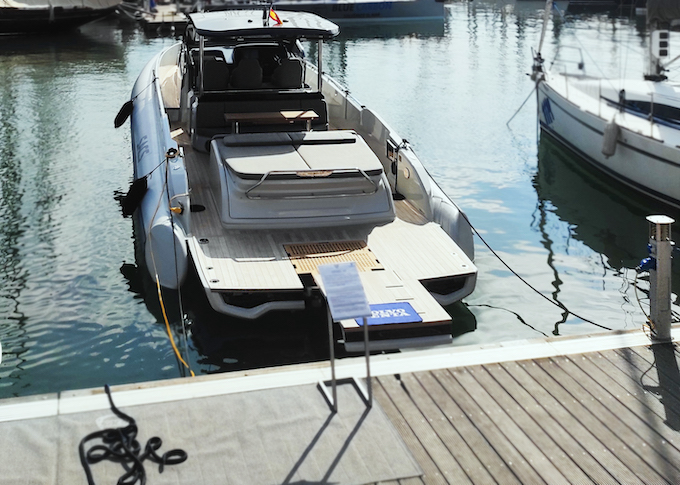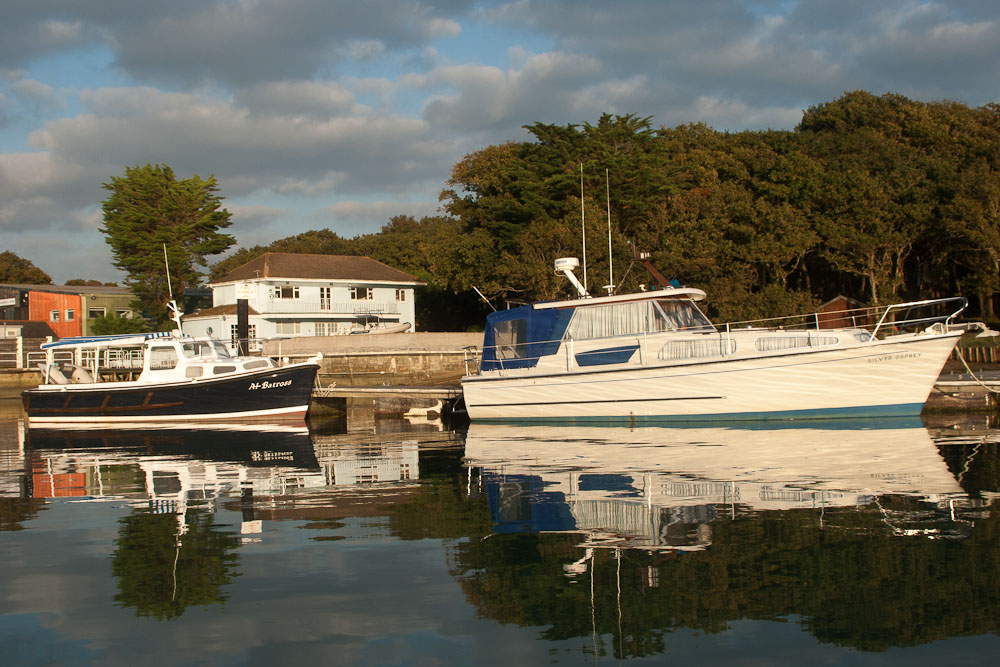Want to brush up on your mooring knowledge before setting sail? Welcome aboard! In this article we will share with you all there is to know about boat moorings and anchors.
So, what is a mooring? A mooring can be loosely defined as a permanent structure to which a vessel can be tied. Although there may be different types of mooring, they each have four aspects in common:
- Ground works. A sinker (substantial weight) or ground chain that is embedded into the river or seabed and to which a chain can be attached.
- Riser chain. The chain attached to the ground works- these can vary greatly in length and size depending on the mooring area and the height of the tide.
- Mooring buoy. These are attached to the riser chain and float on the water surface. The size of the buoy depends on the size of the boat as well as the size of the riser chain and the mooring location. Mooring buoys can typically swivel so as to let the boat move with the tide or wind without interfering with the riser chain.
- Mooring strop. A rope which attaches a boat to a mooring buoy.
Deciding your mooring can be a difficult task. When choosing the right mooring there are 3 things that you should take into account:
- Your destination. Where you’re going is a key determining factor in what kind of moorings will be available and the type of anchor that will be suitable. Is it bedrock? Soft mud? Sand? Depending on the answer, you will be looking at a different type of mooring anchor.
- Your boat. This should come as no surprise, but your boat will also limit the types of moorings available to you. Whether a mooring is suitable or not will depend on your boat’s size, weight, draft and type.
- The conditions. All boaters should be aware of the weather and tidal conditions, as well as the lay of the land. Are you mooring in tidal waters? In a sheltered area? Offshore?
Types of Moorings
Now that you’ve answered those questions, let’s take a look at the different types of mooring available:

When a boat’s bow is secured to a single buoy it is called a swinging mooring.
Swinging mooring
The aptly named swinging mooring is when a boat is secured solely by its bow to a buoy and therefore swings in the wind or current in a circular motion. A swinging mooring is usually deeply embedded in the river or seabed and is attached to a buoy or float on the surface via a riser chain.
Fore and aft mooring
If you don’t want your boat to move, you can secure the bow and the stern of your boat to a mooring buoy and prevent it from being carried by the tide or wind.
Trot
A trot mooring is almost identical to a fore and aft mooring; the boat is secured by two buoys at the stern and bow. However, a trot mooring is positioned away from land and is reached using a dinghy. This type of mooring tends to be for smaller boats.
Pile mooring
A pile mooring is a heavy stake or post, either wooden or metal, that has been driven into the bed of a waterway. Its top is raised above the water so that boats can tie their mooring lines to them.
Pontoon mooring
Perhaps one of the better known types of moorings, a pontoon mooring is a floating platform providing access to a vessel that has been secured alongside it.

The stern is attached to the pontoon, while the bow is secured with the anchor.
Stern on mooring
A stern on mooring is when a boat is attached to a pontoon, quay or bank by its mooring lines and the bow is secured by an anchor- either a permanent one or its own.
Pier
Probably one of the more universally known moorings, a pier is a structure connected to the bottom of a waterway that leads from the shore into the water. Boats can fix themselves to the pier using mooring lines.
Jetty
A jetty is like a smaller pier that can either be attached to the bottom of a waterway or floating where boats can moor.
Running mooring
Boats that are secured with running moorings are attached to between two fixed points on pulleys that are used to bring the boat closer to the shore.
Marina berth
These are fixed, sheltered boat moorings that are commonly found in marinas. Marina berths have a system of pontoons attached to a harbour or port wall that allow boat owners to reach their berths.
Mooring Anchors: Which Anchor Should You Use?
Now that you’re familiar with the different types of moorings available, let’s get into the anchors that you can use.
Mushroom anchors
These curiously shaped anchors are perfect for small vessels such as kayaks and canoes. They are ideal for waterways with soft, muddy bottoms.
Pyramid anchors
Another aptly named anchor. Pyramid anchors are perfect for holding boats in moving water- tidal or otherwise. They can work well in muddy, sandy or rocky bottoms.
Helix anchors
Helix anchors are long straight rods with one or more helixes. They are extremely powerful and are the most environmentally friendly anchor as they cause less damage to the surrounding marine environment. Their use is not limited to boat moorings; they can also be used to secure floating walkways and other structures.
Navy anchors
Navy anchors are what springs to mind when one typically thinks of an anchor. They are extremely heavy and dig deep into the bottom of the waterway. They are- surprise, surprise- typically used by large naval vessels.
Non-Mooring Anchors
These anchors have less holiding power than mooring anchors and are therefore used as secondary anchors.Danforth anchors
Danforth anchors, also known as cruising anchors, are flat anchors characterised by two sharp, triangular flukes, separated by the shank. These anchors have great holding power considering their weight and can be stored flat, both qualities that make them ideal for small boats.
Plow anchors
Plow anchors, also known as CQR anchors, are good for use in sand, mud or grass and are favoured by blue water cruisers. They are one of the oldest types of anchors and have significantly less holding power than other types of anchors available nowadats. They are also slightly more awkward to store onboard given their shape.
For more information check out our article about where to keep your boat.


